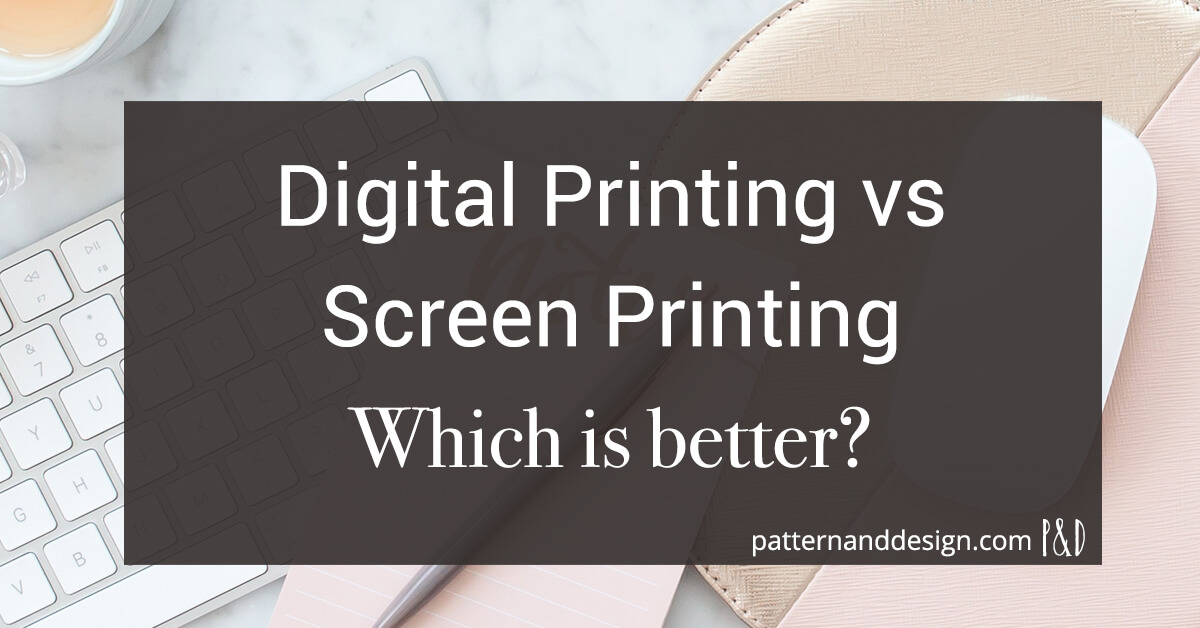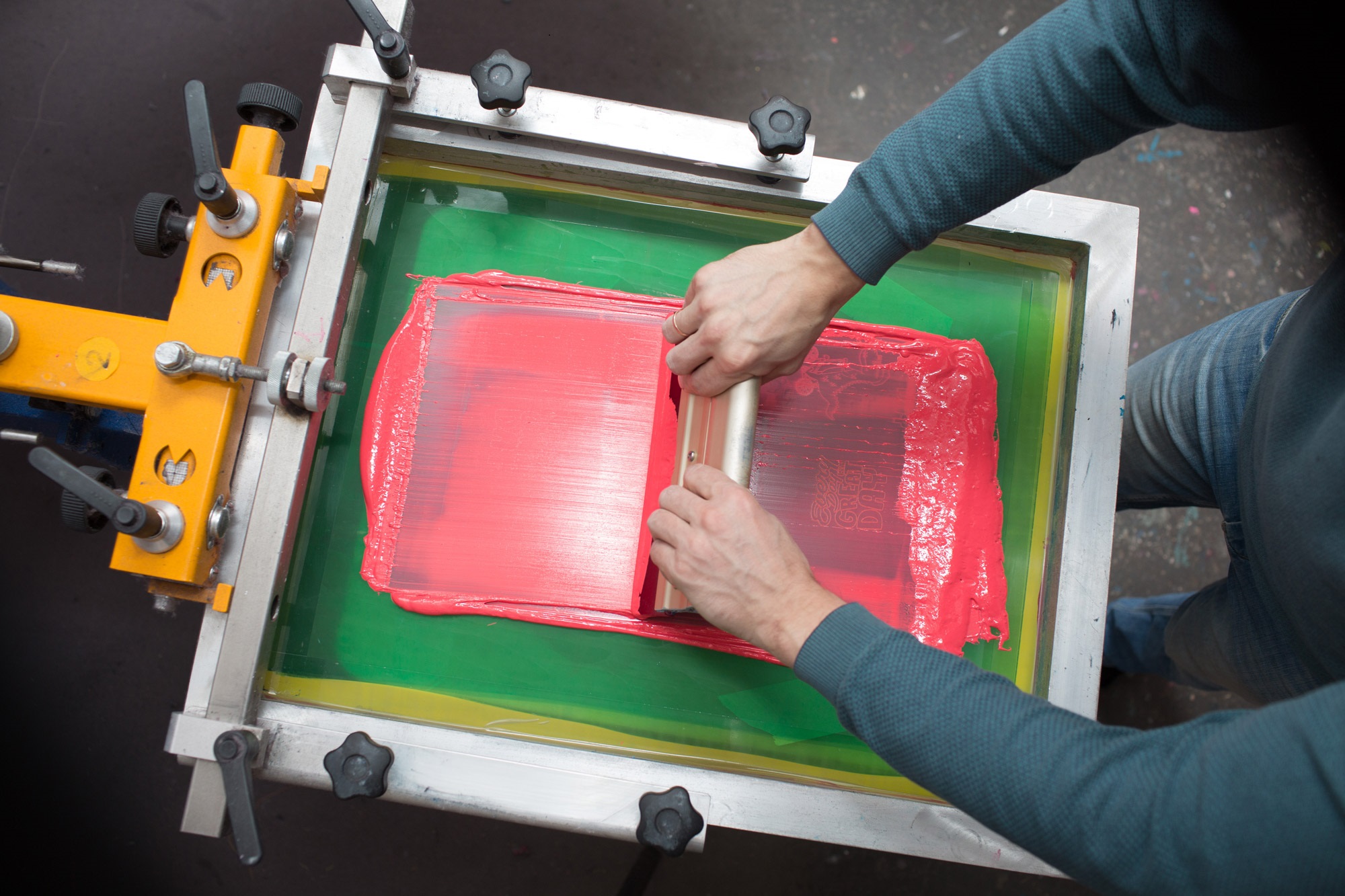Unknown Facts About Tx Tees
Unknown Facts About Tx Tees
Blog Article
All about Tx Tees
Table of Contents9 Simple Techniques For Tx TeesSee This Report on Tx TeesThe 8-Second Trick For Tx TeesFascination About Tx TeesUnknown Facts About Tx Tees7 Simple Techniques For Tx TeesSome Ideas on Tx Tees You Need To Know
That brings your total amount to approximately $1,900 before tax and shipping. Add up other costs, like the variety of utilities it takes to run the shop and the cost of ink and solution per style. screen printing shop. Take the print below. This is a one-color image, so the price of ink per t shirt is about 20 cents.The emulsion must just be a few cents because you 'd just require to layer one screen for this job. Normally, printers attempt to make up to 45% earnings on a print task.

With DTF, you can print a handful of tee shirts, or just one. Both display printing and DTF have their particular niches in the globe.
A Biased View of Tx Tees
The most effective means to know? Ask around and see what printing shop like yours are doing. screen printing shop. Try both out and see which you like far better
When you're selecting what sort of printing technique to use for publishing your art work layouts on your garments, it's crucial that you know the differences between these 2 strategies so you can make the most of outcomes while decreasing costs. Display printing is one of the most typically utilized technique for publishing layouts on textiles.
DTG printing is likewise understood as spot or straight to garment printing due to the fact that it prints just what is needed as opposed to making a display as screen printers do. https://tuongs-ziancy-praurst.yolasite.com/. Screen printing works by display filler squeegee screen printing ink screen mesh screen, then transferring the image to garment utilizing warmth and/or pressure
The DTG printer utilizes unique dye-sublimation inks that are applied into a pre-designed photo by an electronic printing system. The inks enter into the material, permitting vivid shades and remarkable information. It's also called area or direct to garment printing due to the fact that it publishes just what is required as opposed to making a display as display printers do.
Tx Tees Fundamentals Explained
Initially, it's much faster - you can publish a fullcolor picture in mins, rather than hours for screen printing. Second, there's no set up time or prices involved - you can publish any style you like, without having to develop a screen. Third, there's no waste - because display printers display print one layout at a time, they have to screen each color individually.
The paper is extremely costly and can just be made use of when. Once it's printed on, it has actually to be thrown out. - The preliminary acquisition rate is lower than the in advance financial investment of DTG printers- You can publish multi-color styles one screen each time rather of needing to publish each color individually like DTG printing.

Indicators on Tx Tees You Need To Know
However, as opposed to using screen mesh as display printers do, color sublimation printers make use of laser innovation to move your images onto garments or paper. A heat procedure transfers the color from its solid-state straight right into the gas phase which in turn merges it onto material substratums when they are quickly heated up to high temperature levels under high stress.
Sublimation printing is environment-friendly. It makes use of much less water than screenprinting, and due to the fact that it does not entail using hazardous solvents, it's safe for all sorts of apparel. The dye sublimation inks are additionally odor-free when cured, unlike display printers that use harmful chemicals during the screen printing procedure that leave behind an undesirable smell.
They additionally conserve money on expensive devices like exposure devices given that dye sublimation printers do not require a UV exposure unit or a flash remedy oven that is normally utilized in screen printing (custom screen printing). What is direct to garment printing (DTG Printing)? DTG printing is a digital screenprinting procedure that prints directly onto textile making use published here of specialized inkjet printers
The smart Trick of Tx Tees That Nobody is Discussing
DTG printing provides several benefits over standard screenprinting, including the ability to print photographic high quality images, higher shade vibrancy, and the capability to print layouts on darker textiles. DTG printers function by heating up the fabric ink till it transforms right into a gas. The gas after that penetrates the fabric, bonding with the fibers to develop an irreversible print.

Screen printers merely prepare their display after that start publishing till they lack item or ink.- There is a variety of knowledgeable screen printers around the globe, which can be valuable for novices. - It's a slower process - screen printers frequently need to wait on the ink to completely dry before they can print the next color- Screen printers call for manual work, so there's a higher learning curve and it takes longer to create a premium layout- Display printing isn't as precise as DTG printing, so you may get some "blood loss" of colors from one part of the photo onto another if not done effectively.
How Tx Tees can Save You Time, Stress, and Money.
Rather of making use of display mesh as display printers do, color sublimation printers make use of laser modern technology to transfer your images onto garments or paper. A warmth process transfers the color from its solid-state directly right into the gas stage which subsequently merges it onto fabric substratums when they are swiftly heated up to high temperatures under high pressure.
Sublimation printing is environment-friendly. It uses less water than screenprinting, and because it does not entail using harmful solvents, it's risk-free for all sorts of apparel. The dye sublimation inks are additionally odorless when treated, unlike display printers that use hazardous chemicals throughout the screen printing procedure that leave behind an unpleasant odor.
They additionally save cash on costly equipment like exposure systems because dye sublimation printers don't require a UV direct exposure unit or a flash remedy stove that is typically utilized in screen printing. What is direct to garment printing (DTG Printing)? DTG printing is an electronic screenprinting procedure that prints straight onto fabric making use of specialized inkjet printers.
Things about Tx Tees
DTG printing supplies many benefits over traditional screenprinting, consisting of the capacity to print photo high quality images, better color vibrancy, and the capability to print styles on darker textiles. DTG printers function by warming the fabric ink till it develops into a gas. The gas after that permeates the textile, bonding with the fibers to develop a permanent print.
Report this page